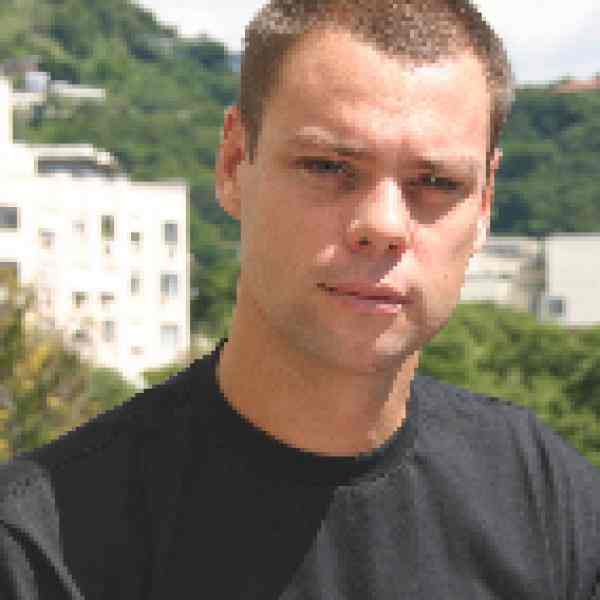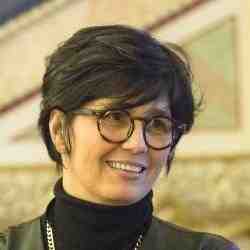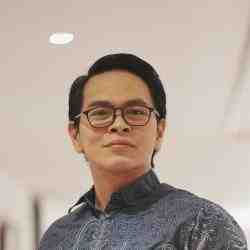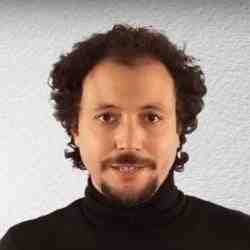Introduction
Luke Dowdney helps youngsters stay out of organized crime through a program that teaches martial arts along with life skills. He is leading an international network of organizations working to end children’s participation in gangs and other organized violence.
The New Idea
Luke is reducing the involvement of children in organized armed violence in Brazil and internationally. The first of Luke’s two programs offers Brazilian children the education and opportunity to choose non-violence. Luta pela Paz (Fight for Peace) is a network of community centers in Brazil’s most violent slums that teach young people basic good citizenship, coping skills, and job preparedness by engaging them in boxing and martial arts classes. These active, fun classes attract children away from participation in gangs. Every aspect of the design and implementation of these centers is rooted in Luke’s relationship with the local Brazilian community where he ran his pilot program, as well as his long-term international experience with the subject.
Luke supports and spreads his work through sophisticated international fundraising strategies. He is opening Fight for Peace boxing gyms and fitness centers in big international cities and designing a fashionable Fight for Peace music label and clothing brand to raise funds and help spread a culture of peace.Luke’s second initiative, Children and Youth in Organized Armed Violence (COAV), is an internet-based network of international organizations. Now a top reference in the field, the network involves practitioners in ten countries that share research, information, and best practices in ending child participation in organized violence.
The Problem
The number of children around the world in gangs and organized armed groups, particularly in urban areas, continues to grow. The tactics used to attract young new members are similar to those in traditional warfare. These include recruitment strategies aimed at people aged 15 to 17, a hierarchical command structure with orders and punishments, payment for services, and the learned capacity to deal with the reality of killing or dying at any moment. Evidence shows that the death rate among children and young people involved in organized armed violence is often higher than in situations of recognized warfare. There were about 500 minors killed in armed conflict in Israel and Palestine between 1988 and 2001. In the same period, almost 4,000 children were killed by armed violence in the slums of Rio de Janeiro.Most attempts by government and the citizen sector to address this problem have failed. The Brazilian State relies on police repression, which only extends the cycle of violence. In evaluating the problem, the context in which children become involved in organized armed violence is often overlooked. The media presents an oversimplified image of favela communities, portraying children as dangerous criminals involved in drug trading and violence. In reality, factors that lead children and youth to engage in organized armed groups include poverty, a lack of education, few job opportunities, social and racial discrimination, low self-esteem, feelings of marginalization, the need for protection against the police or other gangs, dysfunctional families, and absence of accessible public leisure facilities. Unless these factors are addressed through well-integrated, long-term solutions, youth involvement in organized armed violence will persist.
The Strategy
Luke’s strategy involves two interlinked organizations, Fight for Peace and COAV, which share four objectives: keep at-risk youth away from armed groups, change the way society views the issue of armed children and youth, spread his work globally to create a culture of peace, and achieve sustainability. With the help of local partners, Luke has begun national and international replication of his pilot program at the Centro Esportivo e Educacional Luta Pela Paz, in the Complexo da Maré, a violent slum in Rio de Janeiro. This pilot project reached 600 young people. Using both fieldwork and research, Luke developed a method for working with children and youth who are directly or indirectly involved with armed groups. He realized that these young people’s social environment is particularly conducive to involvement in crime and territorial violence at an increasingly young age. To channel this force, he draws youth in at-risk communities toward boxing and other martial arts. These sports attract children to a community center, giving them the opportunity to physically express themselves in a positive environment, within a set of rules. They are able to gain confidence and self-esteem while conveying the message that they don’t need to be criminals to be respected by their peers. The achievements of the children in boxing competitions also help the project gain respect within the community.Complementing these physical activities, Luke’s Center requires children to attend school as well as special classes in citizenship, conflict resolution, human rights, culture, family, and sexuality. Those who are beyond regular school age are sent to partner organizations that offer similar services. In addition, the Center works with families to create a supportive environment within the children’s households and to asses their individual needs for medical, legal, or psychological treatment.The Fight for Peace Community Center creates internship opportunities by partnering with local businesses to provide working-age youth with their first formal job experiences, a very difficult prospect for young people with little education from violent slums. Getting major companies to join this effort has proven difficult, but Luke’s persistence is now beginning to yield promising results.Elected representatives from among participating children serve on the Youth Council, a component of the project that allows children to take part in decisions that concern the Center. This has proven to be a very effective empowering tool and means of developing leadership qualities. A computer lab, a cinema and a radio station provide leisure and outlets for communication. The radio station is run by the youth and will soon broadcast to a quarter million people in the area, providing another empowering tool and a means to spread the work of the Center beyond the rigid territorial boundaries created by conflict among drug gangs.To date, the Center has served over 600 children and young people. Its success has given Luke the legitimacy to speak out about children in organized armed violence to policy makers and the general public around the world. Fight for Peace has the potential to achieve global impact. The second branch of Luke’s strategy, COAV, is an international program that networks organizations around the world and allows them to share research, information, and best practices. It integrates the experiences of groups working with children and youth in traditional warfare, thus promoting dialogue, awareness, and common solutions. COAV operates mainly through an online forum and a trilingual website which is currently visited by about 7,500 people from 23 countries every month. The website is referenced by journalists, researchers, activists, policy makers, and peers working on related social issues. In addition, through creating partnerships with local organizations, COAV is able to work hand-in-hand with other civil society groups and governments. In Rio de Janeiro, for example, COAV has partnered with the town hall to develop actions focused on preventing children and youth from becoming involved in organized armed groups. COAV works directly with the municipal governments of Medelin, Colombia; Cape Town, South Africa and San Salvador, El Salvador. It is creating partnerships with organizations in each of these countries to integrate acquired information into seminars and local discussion groups.The research available through COAV includes Luke’s study of children involved in the drug trade, published in his book, Children of the Drug Traffic (2003). Luke also conducted a study comparing the situation of children and youth in organized armed groups in ten different countries: Colombia, El Salvador, Ecuador, Honduras, Jamaica, Nigeria, The Philippines, South Africa, the United States and Brazil. His second book, Neither War nor Peace: International comparisons of children and youth in organized armed violence (2005), compiles 120 interviews from this research. Luke now wants to expand the partnerships he created with local governments in each of these ten countries, just as he has done in Brazil, Colombia, South Africa, and El Salvador.Luke strives to expand Fight for Peace and make it a strong actor in the ten countries where COAV is already engaged. He has created a twofold strategy to guarantee the sustainability of his work. The Fight for Peace Fitness Centers, designed for business men and women and focusing on boxing and martial arts, help to make an international public aware of the problem—what Fight for Peace does, and how they can get involved. The first Fight for Peace Fitness Center will soon open in London with two more on the way, and Luke will devote a percentage of their profits to sustaining community programs. In addition to the Fitness Centers, Luke is designing a Fight for Peace music and fashion label. The goal is to associate the name and ideals of the program to hip-hop music and sportswear that appeal to young people, influencing both the young people and the way society views them. Luke is currently contacting well-known musician and athletes to get their support for the program by recording for the label, wearing the clothes, and advertising the products and the cause.To continue to generate an international resource base, Luke has established an international non-profit organization based in New York City. He is an experienced fundraiser with a strong global network of real and potential partners, including major international corporations based in the USA and the UK.
The Person
Luke Dowdney was born and raised in London. He was selected for a scholarship to an elite school when he was only 11. During that period he was bullied by older boys at the school. He felt very lonely and joined the school’s Christian group as a survival strategy. He also began to practice boxing and later won the British Universities Championship, which gave him much-needed self-confidence.At 16, Luke went back to public education and, two years later, decided to volunteer in Nepal. It was his first experience in social work. He initially taught English, but then began working with sports-related activities. He returned to Nepal as a volunteer every year for the next 5 years, and raised funds among college friends to help the school where he taught. With the funds he raised, he and a local organization were able to build three buildings: a science lab, a library and a student dormitory. Luke coordinated groups of volunteers that spent 4 or 5 weeks in Nepal building with local workers. As a university student, Luke came to Brazil as a volunteer with the Street Children’s National Movement in Recife. After working in Brazil for 8 months, two youths he had come to know very well were murdered. Witnessing the violence afflicting children, he became deeply involved with human rights issues.In 1997, Luke moved to Rio de Janeiro and began volunteering with Viva Rio to design educational programs for slum children and youth, where he was touched by their increasing involvement in drug trafficking and victimization by abusive police. He felt that the programs targeting children and youth affected by armed violence were inadequate. Fight for Peace allowed Luke to establish himself in the Brazilian social sector and create stable projects that are now ready for next steps.



